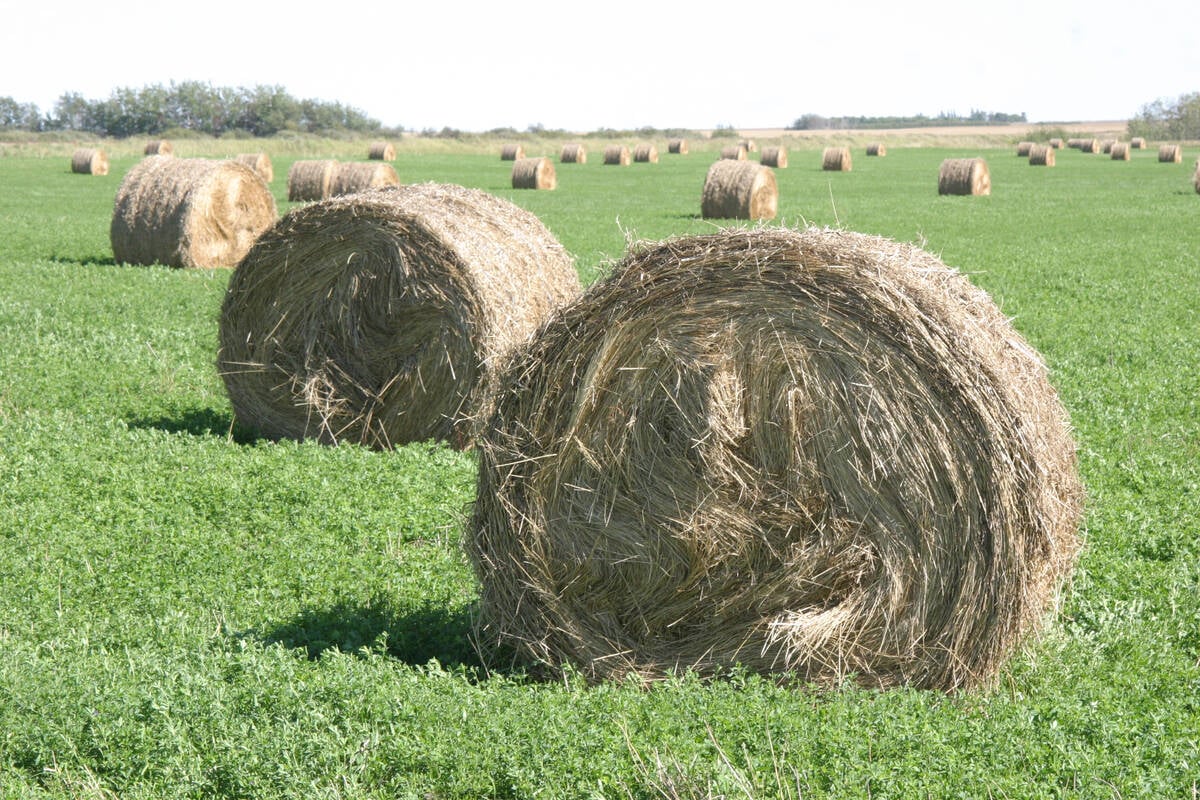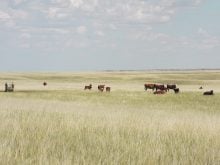A University of Nebraska forage specialist says the extra productivity from adding legumes outweighs the risk of bloat
HOLLAND, Man. — Attracting visitors to Manitoba in the middle of January is not an easy task.
Despite the challenge, organizers of the Manitoba beef and forage days convinced a University of Nebraska professor to spend a week in the province — from Jan. 14-17.
Bruce Anderson, an agronomy professor and forage specialist, spoke at beef and forage sessions in five locations across the province.
One of his stops was Holland, Man., on a sunny and -26 C day.
Anderson provided advice on extending the grazing season and how to improve pasture productivity.
Read Also

Breaking down successful winter feeding into six steps
It’s that time of year when it is important to start planning for a cow herd’s winter feeding program. Here are six steps I think are necessary to consider when getting your feed tested.
His key message?
Add legumes to the pasture because the productivity gains outweigh the risk of bloat.
“I think it (bloat) has been a real barrier to taking advantage of all that legumes can provide,” he said. “Personally, I feel our fear of bloat is costing us more than most of us will lose economically (from cattle deaths).”
Consumption of legumes can cause bloat, a condition where gas accumulates in the rumen as the feed is fermented. The cattle cannot expel the gas and if the pressure becomes too severe it can cause heart or lung failures.
Bloat from legume plants is a risk, but if managed properly, legumes can turn an average pasture into a high performing pasture, Anderson said.
“At the end of the season … when these cool season pastures were not as productive, not as good of quality, then the legumes really showed their value.”
To make his case, Anderson referred to University of Nebraska research comparing pastures with legumes to pastures where nitrogen was added to the soil.
The researchers found:
- Adding legumes increased cattle rate of gain by 0.39 pounds per day.
- That extra weight worked out to 50 additional lb. per acre of pasture, over 144 days of grazing.
- Assuming each additional pound was worth 50 cents, legumes increased returns by $25 per acre.
- Including the savings from not applying nitrogen, the overall benefit was $55 per acre.
In addition, legumes fix nitrogen and improve the overall fertility of the pasture.
“If we look at soil tests from our area, a lot of our soil tests on pastures come back with under 20 lb. of available nitrogen per acre,” said Tim Clarke, Manitoba Agriculture forage specialist in Ashern, Man.
Still, the economic gains from legumes don’t have the same emotional impact as seeing a dead cow in the pasture.
For some producers the payback from legumes isn’t worth the risk.
The risk is real but there are ways to minimize losses from bloat, Anderson said.
One option is using legumes that don’t cause bloat, such as cicer milkvetch, birdsfoot trefoil and sainfoin.
“If you incorporate some of those … even in (a pasture) that has alfalfa, the non-bloat characteristics of those legumes will tend to (reduce) the effect of bloat (from) the bloat-causing legumes,” Clarke said. “In particular sainfoin and the ones that have tannins in them.”
One of the flaws of non-bloat legumes is they aren’t as productive as other legumes, especially in Western Canada’s harsh climate. However, the latest varieties are more resilient.
“That had been the problem on our latitudes. The sainfoin varieties out there weren’t (hardy) enough,” Clarke said. “There’s a newer variety of sainfoin, called AAC Mountainview, that is more winter hardy.”
There are other ways to manage bloat, besides non-bloat legumes, Anderson said.
One key is timing.
Don’t move cattle onto a legume pasture when they are ravenous because they’re likely to consume more legume plants, increasing the risk of bloat.
Also, hold off on moving cattle onto pastures with legumes until the plants are more mature.
“A real, young lush legume plant is much more likely to cause bloat than one that has a little bit of growth on it,” Anderson said.
During his speaking tour of Manitoba, Anderson learned many livestock producers in the province and elsewhere on the Prairies are more progressive than their counterparts in Nebraska.
Practices to extend the grazing season, such as bale and swath grazing, haven’t caught on in Nebraska. Most producers still bring the cattle back to the feedlot and put out bales.
“Especially the swath grazing — we’ve struggled to get people to adapt to that type of thing,” Anderson said. “We have a more ‘machine-centric’ approach.”















